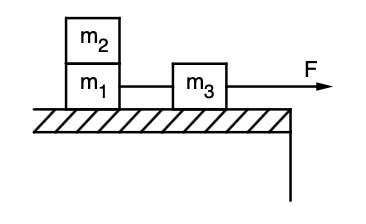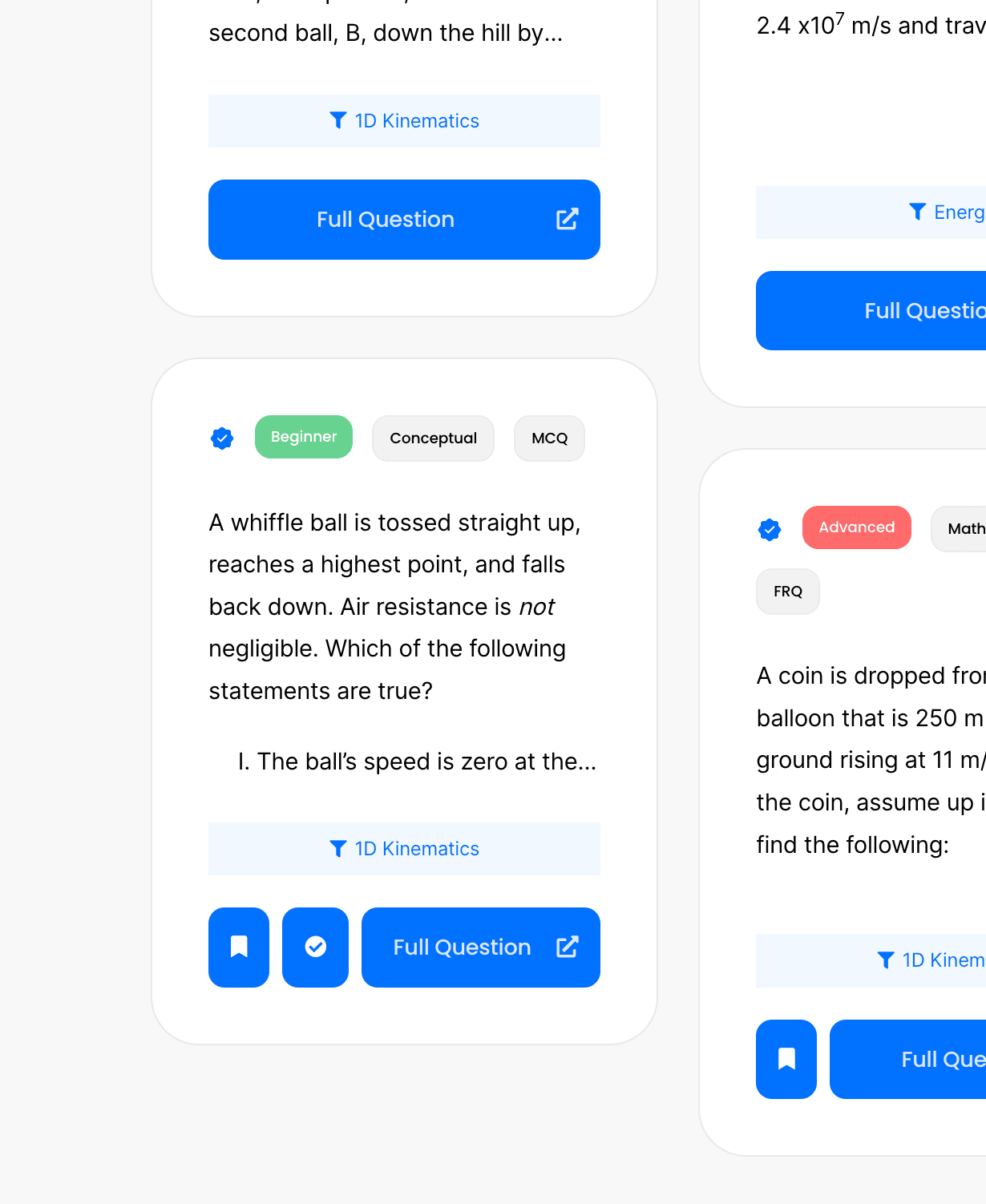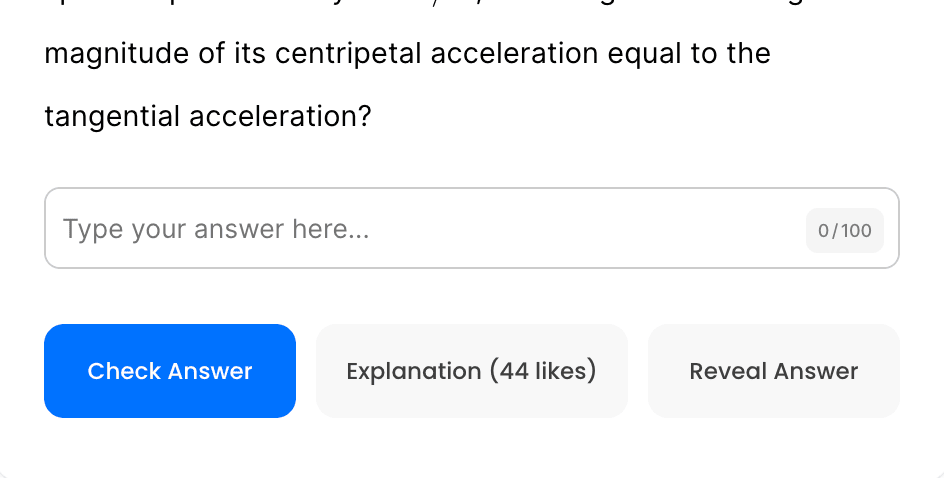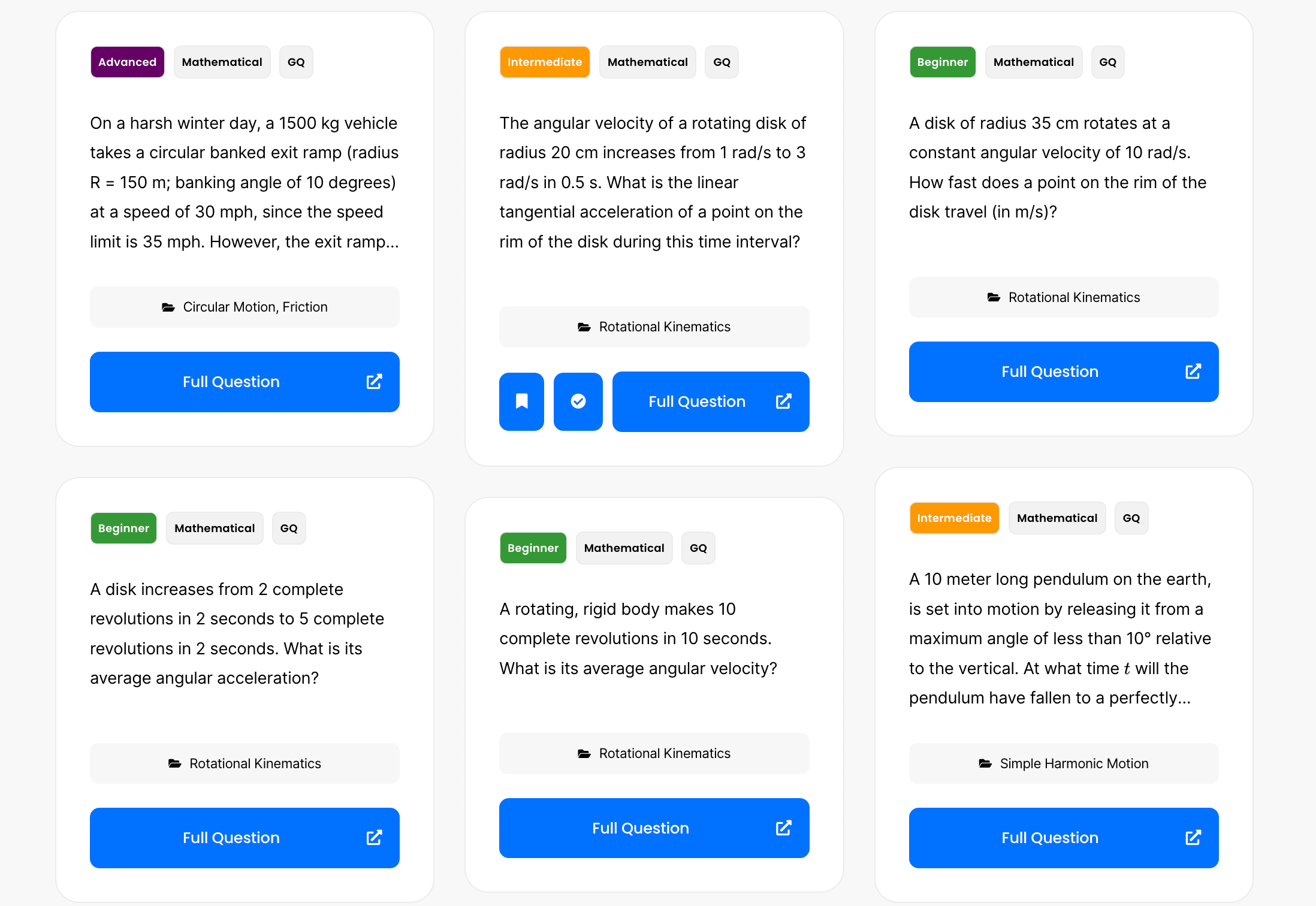
Block \(m_1\) is stacked on top of block \(m_2\). Block \(m_2\) is connected by a light cord to block \(m_3\), which is pulled along a frictionless surface with a force \(F\) as shown in the diagram above. Block \(m_1\) is accelerated at the same rate as block \(m_2\) because of the frictional forces between the two blocks. If all three blocks have the same mass \(m\), what is the minimum coefficient of static friction between block \(m_1\) and block \(m_2\)?
A 4 kg mass is traveling at 10 m/s to the right when it collides elastically with a stationary 7 kg mass. The 7 kg mass then travels at 2 m/s at an angle of 22° below the horizontal. What is the velocity of the 4 kg mass?
A block attached to spring demonstrates simple harmonic motion about its equilibrium position with amplitude [katex] A [/katex] and angular frequency [katex] \omega [/katex]. What is the maximum magnitude of the block’s velocity?
A \( 1.0 \, \text{kg} \) lump of clay is sliding to the right on a frictionless surface with a speed of \( 2 \, \text{m/s} \). It collides head-on and sticks to a \( 0.5 \, \text{kg} \) metal sphere that is sliding to the left with a speed of \( 4 \, \text{m/s} \). What is the kinetic energy of the combined objects after the collision?
A bullet of mass 0.0500 kg traveling at 50.0 m/s is fired horizontally into a wooden block suspended from a long rope. The mass of the wooden block is 0.300 kg and it is initially at rest. The collision is completely inelastic and after impact the bullet+ wooden block move together until the center of mass of the system rises a vertical distance h above its initial position.
A moderate force will break an egg. However, an egg dropped on the road usually breaks, while one dropped on the grass usually does not break because for the egg dropped on the grass:
A rocket explodes into two fragments, one 25 times heavier than the other. The change in momentum of the lighter fragment is
A 84.4 kg climber is scaling the vertical wall. His safety rope is made of a material that behaves like a spring that has a spring constant of 1.34 x 103 N/m. He accidentally slips and falls 0.627 m before the rope runs out of slack. How much is the rope stretched when it breaks his fall and momentarily brings him to rest?
A car is safely negotiating an unbanked circular turn at a speed of \(17 \, \text{m/s}\) on dry road. However, a long wet patch in the road appears and decreases the maximum static frictional force to one-fifth of its dry-road value. If the car is to continue safely around the curve, by what factor would the it need to change the original velocity?
A 1100 kg car accelerates from 32 m/s to 8.0 m/s in 4.0 sec. What amount of force was needed to slow it down?
Three blocks of masses \(5 \, \text{kg}\), \(4 \, \text{kg}\), and \(3 \, \text{kg}\) are placed side by side in that order. A \(25 \, \text{N}\) force applied on the \(5 \, \text{kg}\) block accelerates all three blocks together to the right. Find the acceleration of the blocks and the normal force the \(4 \, \text{kg}\) block exerts on the \(3 \, \text{kg}\) block.
How long does it take for a rotating object to speed up from 15.0 rad/s to 33.3 rad/s if it has a uniform angular acceleration of 3.45 rad/s2?
By continuing you (1) agree to our Terms of Use and Terms of Sale and (2) consent to sharing your IP and browser information used by this site’s security protocols as outlined in our Privacy Policy.
Quick Start Guide
AP physics 1, AP C, honors and advanced physics students.
Quickly filter questions by units and more.


Here’s guide to using 5 UBQ filters.
GQ = general question, MCQ = multiple choice, FRQ = free response.


Click the check or bookmark button.
Now you’ll be able to see completed or bookmarked questions at a glance!
Answer keys, personalized for you.

Phy will be responsible for grading your FRQs and GQs.
No more copy and pasting. Just solve and snap.
Questions for Mastery

By continuing you agree to nerd-notes.com Terms of Service, Privacy Policy, and our usage of user data.